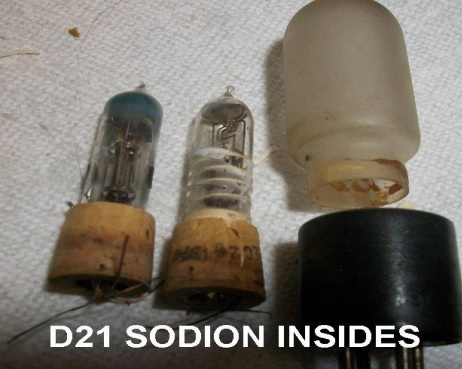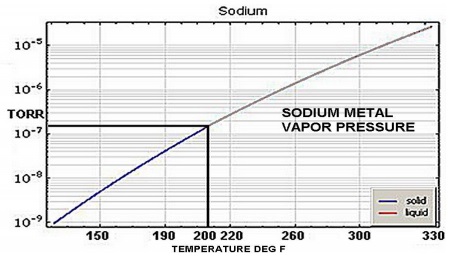THE SODION TUBE: Scamming Around the De Forest Patents
by Ron Soyland
Editor: Lee de Forest is one of the great four founders of radio. His Audion tube moved radio forward by leaps and bounds. Ron Soyland here describes one of the unfortunate offshoots of deForest’s success!
Back in the early days of radio there were many people that looked for a way to make money in the radio field. Most did it in an honest way, producing radios, or radio parts for sale, or even radio sales and repair. However, there always have been those people that will look for some way to scam their way to fortune! The sodion tube was likely one example! Up until about 1925 de Forest had quite rigid hold on the production of triode vacuum tubes via his patents. He vigorously sued anyone that was caught infringing on his rightful market, so many people tried to come up with some scheme to beat the patents. There are numerous examples, some valid ideas some total scams. The sodion tube was one such device, which was at least marginally a scam. However, science being as primitive as it was in that day and age, allowed Dr. Donle, the inventor, to get a patent on it! The de Forest triode patent, which were actually two patents that were related, covered three element vacuum tubes that had a grid spaced between an electron emitter and a collector plate, and a second patent covering a three element tube with two plates spaced on opposite sides of an electron emitter. That second patent effectively covered the sodion tube! If only they were smart enough to know why! This set of patents substantially limited any of the practical implementations of the vacuum tube by others. So there had to be something fundamentally different about any new design of tube to make it viable for a patent. Something that could be slipped by the patent office engineers if it was not on the up-and-up.

In the sodion tube, this was the addition of sodium metal inside the envelope to provide a “conductive gas with special properties” that would enhance the operation of the tube. In spite of having an electrode arrangement that fundamentally violated de Forest’s patent, including his patent on the gas triode, the addition of sodium was deemed to be enough of a new implementation to allow Dr. Donle, the inventor, to get a separate patent. However, the entire design was bogus due to a characteristic of the tube that was poorly understood at that time, and also difficult to measure with any equipment available at the time! The first implementation of the sodion tube used a pool of liquid sodium metal as the plate. This was soon abandoned, as it was practically impossible to keep the sodium in the bottom half of the tube, thus leading to many failed tubes due to the sodium metal slug moving in the envelope during handling causing damage to the other electrodes. The second implementation used a smaller quantity of sodium in the tube, a small drop of sodium about the size of a match head, contained in a small screen housing. This kept the metal contained so it couldn’t bounce all over the place. Big deal. That was only one problem with the tube! To get sodium to melt, it was necessary to heat it to its melting point, which is approximately 200 degrees F. To accomplish this a heating wire was wound around the envelope of the tube. This was operated from the filament supply to heat the tube. The original S13 sodion with the large glob of sodium in the tube could actually heat enough to see the sodium slosh around in the tube. The later D21 types the sodium droplet in the screen housing was “there by definition” but there was no way to tell if it was ever melted or not. It was totally doubtful, since the heating element used very little power from the filament supply. Remember, back then all the radios were operated from batteries so any factor that caused these batteries to go dead faster was not appreciated! Indeed, the D21 gets only warm to the touch when it is operated, nowhere near the 200 F to melt sodium. So much for any liquid sodium in the screen housing! But that actually was not of consequence! There was a much more serious problem with the design!
The gotcha for the whole scheme is what is called “vapor pressure” of the material at a given temperature. As a substance (any substance) is heated, its molecules vibrate more vigorously, finally vibrating so violently they break loose from the material and form a vapor in the surrounding space. Water boiling is an example. At atmospheric pressure water molecules vibrate so violently at 212 F that they fly off into the air forming a cloud of steam.

Sodium is no different. But the vapor pressure of sodium is vastly different from water! Indeed, sodium barely turns to a liquid at 200 F. Since it was not practical, due to limitations of battery power, to heat the sodium to very much past melting, the vapor pressure in the sodion tube would be approximately that of sodium at 200 F. From a plot of temperature VS pressure for sodium we see that the vapor pressure is well below 10-6 torr, a very good vacuum! So the sodion would have a sodium molecule vapor pressure about 10,000 times less than that found in a good gas triode, such as a UX200A! The sodion thus functioned as a high vacuum detector, the very few sodium ions present having negligible effect on the operation of the tube! The tube worked only mediocrally at that! The gain of the sodion was minimal due to the poor electrode arrangement, making it about equal to a crystal detector. If anything the sodion worked as a gas detector more from residual air in the tube than from the sodium ions themselves! The sodion tube was thus able to scam its way past de Forest’s patents, but due to the poor performance it was never popular. Only a few radio sets were ever produced using it. The UX200 gas triode was commonly available at the time and it had much better performance. So, Dr. Donle did not make any significant money with his tube!